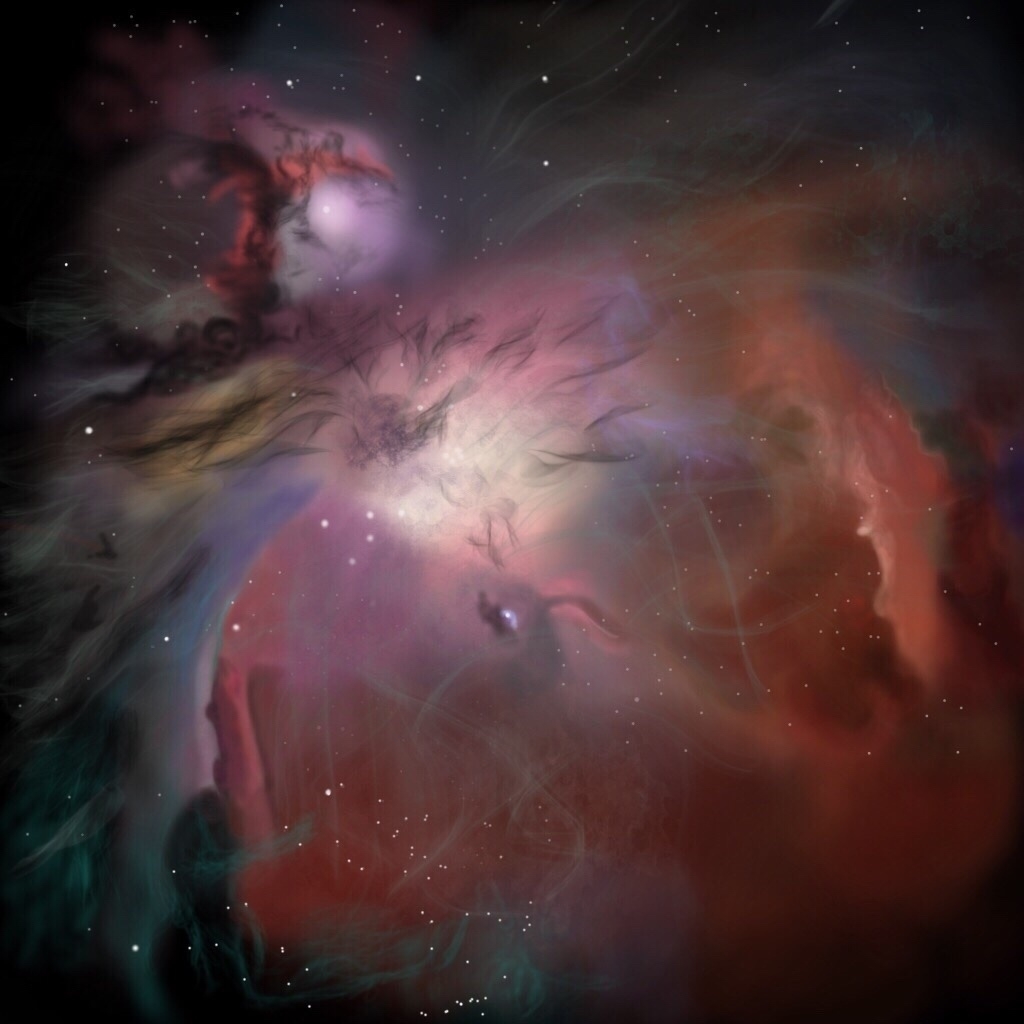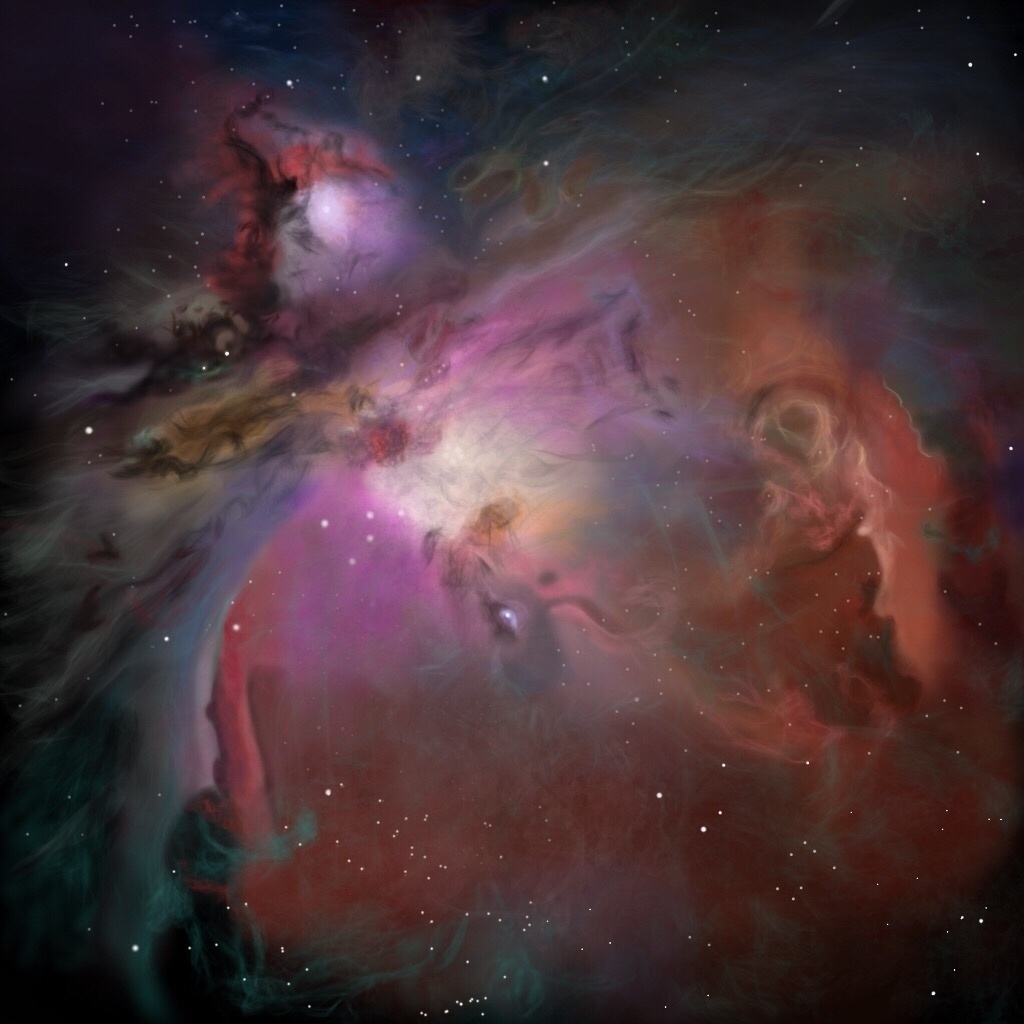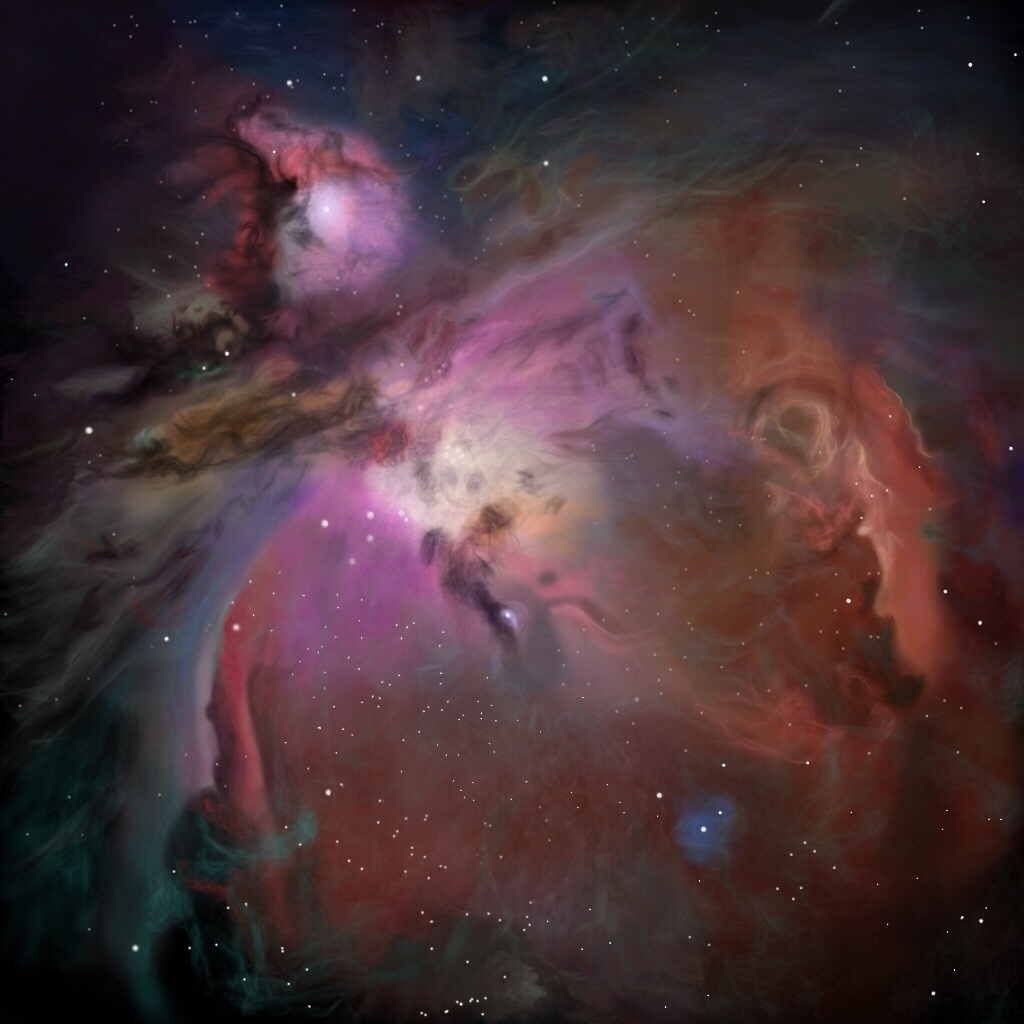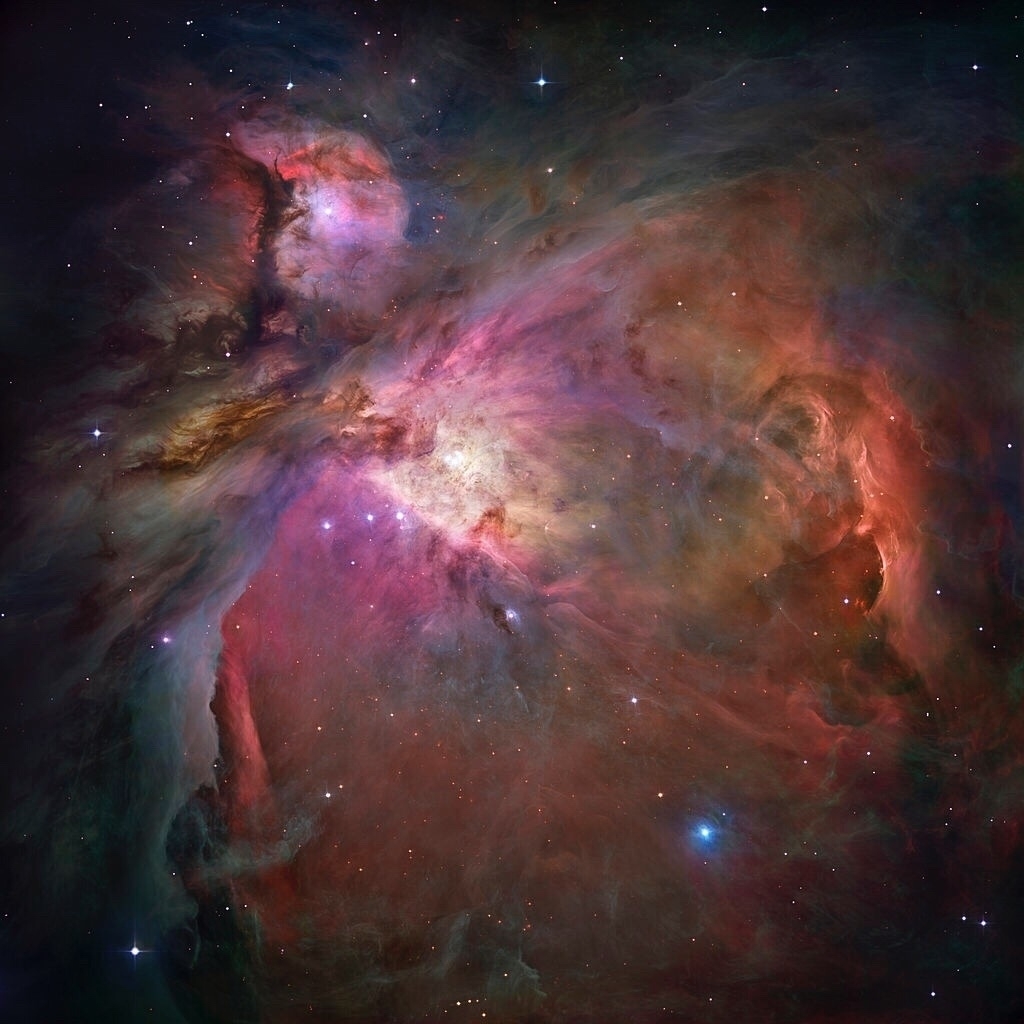Painting the Orion Nebula
In the fall of 2012 I had my first ever look at the Orion Nebula through a telescope. Like many people I'd seen Hubble images which are obviously stunning. Also, like many that know their constellations, I had seen it with my naked eyes as one of the stars in the sword of Orion. But with a telescope of any size or even with good binoculars, the middle star of the sword emerges as the center of this fantastic nebula. It's the sort of object many amateur astronomers will revisit many times. I know I have. It's a winter object, often referred to as the gem of the winter sky and with good reason. Of all the nebula visible from the northern hemisphere, winter or summer, The Orion Nebula is the most distinctive in terms of size and contrast. It provides amateur astronomers an opportunity to train their eyes in the discernment of greater details. Provided the same seeing conditions, a first viewing for 10 minutes is likely to be improved with a second viewing for 10 minutes the same night or another. Look again a third time for 15 minutes and you are very likely to see more detail. With each subsequent viewing more details emerge. It's also an object that benefits from larger, better instruments. So, while I can view it with binoculars or a 6" reflector if I get a chance to view it with a 10 or 12" reflector I will see a great deal more especially if I've had numerous previous sessions with it.
I've not yet tried to sketch or paint the nebula while at the scope though I hope to do just that this winter. In the mean time I decided to give it a go as my second painting using Procreate on the iPad. My intent is to do a series of these in part to improve my painting technique and knowledge of Procreate but also to better learn the details of the object. Just as more time looking through the telescope results in noticing more detail, more time looking at and painting an image, does the same. With each painting I'm also spending more time reading about the object. Usually using a combination of the Sky Safari description in combination with the Wikipedia entry. Here's the entry for the Orion Nebula.
In total I've spent about 27 hours broken up into 5 or so sessions. Here's a look after about 16 hours:

At this point it was easily recognizable but still missing many details. I should mention that I have no experience painting on any medium. It may well be that this sort of project should have taken half the time. Or double the time. It may also be that I'm going about it all wrong. The gist of it is that I'm layering. I've got a layer of stars on the very top, another for the base nebula which is largely created with the airbrush and sits at the bottom. Then I end up with at least two layers of wispy nebulosity and yet one more which consists of the darkest nebulosity and sits on top. These are often the thickest, clumpiest bits of dust and gas which more completely block the light coming from behind. The thickest of these are often referred to as bok globules.
The next image represents about 22 hours. Lots of refinements and new details.

Much closer but still not there. It's hard to know when it's "done". I could have stopped at this point but many details were missing and some bits that I did have were not right. That said, it's a painting and not meant to be exact. I suspect that going forward I'll play with this idea of what's finished because there is no way to know. Especially with something such as this, my intent is to get something that very closely resembles the photographic image but which is still obviously a painted version. It's not necessarily a creative project as much as it is a documentary.
The last image was finished this morning. I thought I was finished last night. But upon opening it up noticed more details. And that's the thing of it. I made some changes this morning but could have kept going. I could have spent all day on it and tomorrow as well. There's always another wisp of gas to be painted. Another knot of darker gas. A missing star. An area of gas in which my color is off. So is it finished? Yeah, for now. It's time to take a break and then move on. Here it is after about 27 hours.

Of course it should be said that the photographic images vary. Not only can the color very but also the emphasis on stars or nebulosity can change (among other things). It depends, in part, on the spectrum in which the photo was taken. The electromagnetic spectrum is a wonderful thing consisting of a variety of wavelengths each of which is photons traveling at different energy levels. The lower energy wavelengths such as radio or microwave are longer and pass through gas and dust more readily thus images taken in those wavelengths will tend to allow more background stars through. Images taken at higher wavelengths such as the visible will tend to show fewer stars as the foreground gas and dust will block some of them. Here's the image I used for this painting, taken from the Wikipedia:
